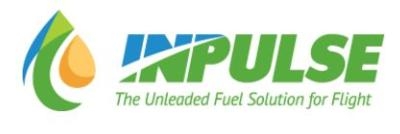Thu, Aug 02, 2012
Can’t Live With It, Can’t Live Without It: What Is Old Is New
By Bruce Brandon
A gnawing question that keeps many in GA up at night is whether there will be fuel in the future for their airplanes. As ANN has reported, there are several companies working on the problem (see previous articles on GAMI and Swift Fuels).Unfortunately it is not just those who fly high compression engines that need to be concerned. Auto gas is a solution for many low compression engines but only as long as it has the proper octane and NO ethanol. It is going to be challenging, but not impossible to get ethanol free auto gasoline. What about high compression engines?

Air Plains Services Corp. is tackling this problem using old technology. Todd Petersen (pictured) of Petersen Aviation, noted for its auto-fuel STCs, obtained an STC for anti-detonation injection (ADI) in 1986 that allowed high compression engines to burn 91 octane unleaded auto fuel. Because the price differential between aviation fuel and auto fuel in 1986 was not large (as it is now) it failed to catch on.
As our previous articles stated, octane is the big issue when lead is removed. When high compression engines came into the inventory in the 1930s, a need arouse to increase the octane. The solution was to use ADI. During WWII ADI was used in most of our front line aircraft including the B-24, P-38, P47, and P-51.
Fast forward to now. Fuel prices are outrageous and even at these exorbitant prices 100LL is going to go away, the only question is when. As stated, auto gas is a possible solution for 80-85 percent of the GA (low compression) fleet but the remaining 15 percent (high compression) have a problem.
Air Plains says the solution is its ADI system branded as Impulse. Impulse uses the 1986 Petersen STC to allow high compression engines operate on 91 octane unleaded fuel. It is currently providing STCs for Beechcraft Barron, Cessna 188 AGtruck and Cessna 210. Aero Plains is working to get the STC expanded to other IO-520, and IO-540 powered aircraft such as the Cessna 206, 180/185 and the Beechcraft Bonanza.

Inpulse injects a mixture of 60 percent methanol, 39 percent demineralized water and 1 percent soluble oil into these high compression engines so that 91 octane fuel works properly. The system consists of a reservoir, lines and control panel that add a total of approximately 42 lbs. (including Impulse fluid) for single engine and approximately 80 lbs. to a twin engine aircraft. Impulse is to be used for five minutes for takeoff and when landing (in case of a go around) and anytime the CHT exceeds 400° Fahrenheit.
Inpulse’s liquid mixture cost approximately $2.30 per gallon to produce. Approximately ten takeoffs can be made before refilling. The cost of the STC/system, including the equipment, is approximately $8k-$9k for single engine aircraft and $11-$12k for a twin.
More News
Klyde Wonders If The 'New' SouthWest Can 'Out-Spirit' Spirit... FMI: www.klydemorris.com>[...]
From 2012 (YouTube Edition): Extensive Expertise in Backup Solutions Makes MCIA Uniquely Qualified In This Market There's no such thing, in aviation, as TOO much caution... hence t>[...]
Aero Linx: Historic Aircraft Association (HAA) The Historic Aircraft Association (HAA) was founded in 1979 with the aim of furthering the safe flying of historic aircraft in the UK>[...]
Jamming Denotes emissions that do not mimic Global Navigation Satellite System (GNSS) signals (e.g., GPS and WAAS), but rather interfere with the civil receiver's ability to acquir>[...]
"Respectfully, U.S. and European airlines should not be even contemplating the future purchase of airplanes from Chinese military companies...” Source: US Representative Raja>[...]
 Klyde Morris (05.02.25)
Klyde Morris (05.02.25) Classic Aero-TV: Introducing The MD302--Mid-Continent's Standby Attitude Module
Classic Aero-TV: Introducing The MD302--Mid-Continent's Standby Attitude Module ANN's Daily Aero-Linx (05.04.25)
ANN's Daily Aero-Linx (05.04.25) ANN's Daily Aero-Term (05.04.25): Jamming
ANN's Daily Aero-Term (05.04.25): Jamming Aero-News: Quote of the Day (05.04.25)
Aero-News: Quote of the Day (05.04.25)




